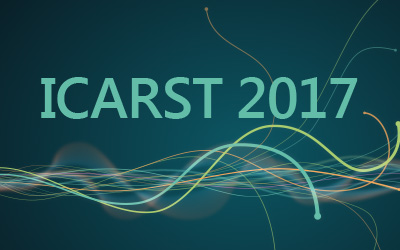Speaker
Ms
Branka Mihaljević
(Ruder Boskovic Institute, Croatia)
Description
The Ruđer Bošković Institute is Croatia’s leading scientific
institute. The Radiation Chemistry and Dosimetry Laboratory (RCDL)
has remained until the present day the only unit in the country
pursuing both basic and applied scientific research in the fields of
radiation chemistry, dosimetry and radiation processing.
Physico-chemical effects of irradiation, being function of absorbed
dose, are used for the quantitation of absorbed energy, i.e.,
dosimetry. Two families of liquid chemical dosimetry systems have
been developed by the RCDL. The low-dose system is nowadays one of
the best characterized chemical dosimetry systems in the range of
therapy and accident doses. The high-dose system, based on the
ethanol-chlorobenzene (ECB), has been accepted as a joint ISO/ASTM
51538 standard.
Research in applied radiation chemistry and radiation microbiology,
analyses of epidemiologic and economic data, our presence on national
and international bodies generating and maintaining corresponding
regulations, permanent improvements of our irradiation facilities and
other activities all have helped introduce into Croatia the necessary
scientific, technical, legal, economic and other prerequisites for
technology transfer in the yield of radiation processing. At present,
RCDL has the only facility of its kind in Croatia and the region. The
main equipment is a batch type panoramic $\gamma$-irradiator
($95$ kCi ${}^{60}$Co) which has been designed by the RCDL staff,
and its periodical upgrading has been regularly assisted by the IAEA.
Although only an experimental facility at the beginning, it was
designed with the future role of a multipurpose pilot scale
irradiation facility in mind, capable to contain more than $100$ kCi of
${}^{60}$Co. The irradiator is suitable for a variety of applications, from
medium dose range used in radiobiology to high doses used in radiation
processing and radiation chemistry. The capacity of the irradiator
chamber is $4$–$6$ m$^3$ of material per batch. There is no conveyor
to transport goods into and out of irradiation chamber giving maximum
flexibility with respect to the dimensions and weight of the objects.
Performing commercial scale irradiation for sterilization,
pasteurization, decontamination and disinfestation of various
materials such as medical supplies, pharmaceuticals, foods, cosmetics
and toiletries, packaging, etc., provided the necessary understanding
of practical aspects of irradiation processes and dosimetric control
methods. In recent years the interest for irradiation protection and
conservation treatment of cultural artefacts has been strongly
increased and successfully carried out in Croatia and region.
In this lecture a review of scientific research and development of the
RCDL over the past five years will be presented, with special
attention given to the recent upgrading of the facility. This
upgrading has enabled the RCDL to offer the exchange of knowledge and
experience in many areas of scientific research as well as to offer
more extensive and diverse applications of radiation technology.
The support of the IAEA in ensuring timely supplies ${}^{60}$Co
over the years, especially through the recent Technical Co-operation
Project CRO/1/006 (2014-2015) is gratefully acknowledged.
| Country/Organization invited to participate | Croatia |
|---|
Author
Ms
Branka Mihaljević
(Ruder Boskovic Institute, Croatia)
Co-author
Ms
Zeljka Knezevic
(Ruder Boskovic Institute, Croatia)

